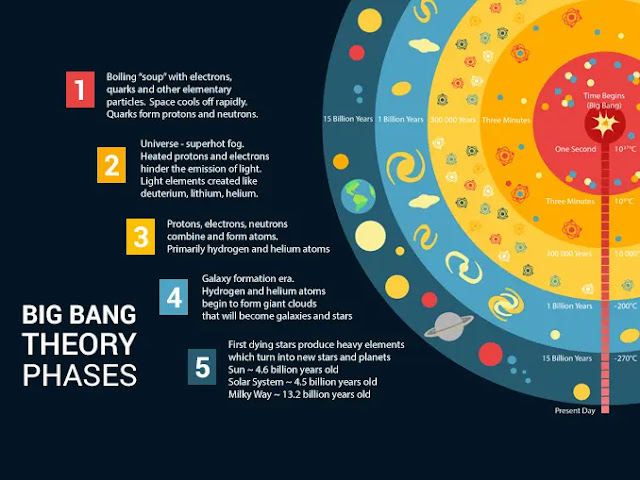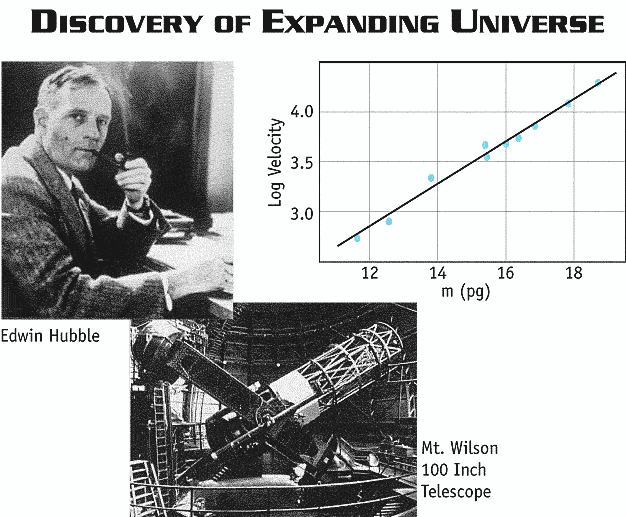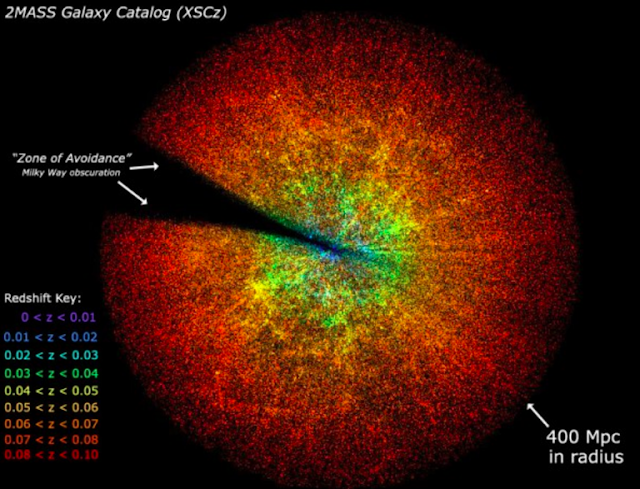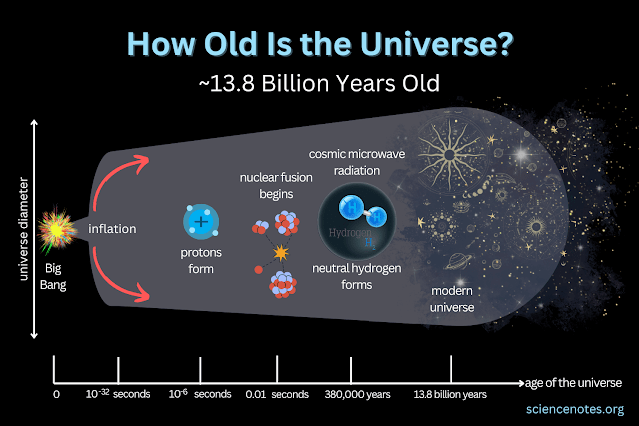The Big Bang Theory (or Big Bang) is the foundation of contemporary cosmology, providing a comprehensive explanation for the formation and evolution of the universe. It is an enthralling scientific theory that traces the origin of the universe to a single, mind-blowing event. This article will explore the fundamental nature, history, fundamental concepts, and implications of the Big Bang Theory.
The Big Bang theory posits that the universe originated from
a singularly hot and dense state approximately 13.8 billion of years ago.
During the first split second of its existence, the universe rapidly expanded
and cooled, a process referred to as inflation. At the same time, inflation
accelerated, doubling the size of the universe at a rate of 10^-35s per second.
Origin of the
Universe: A Cosmic Explosion
The Big Bang Theory
Defined
According to the Big Bang Theory, the universe began with a single, infinitesimal, and infinitesimal amount of matter in a state of infinitude and infinitude, approximately 13.8 billion of years ago. Subsequently, in a catastrophic explosion, this infinitude expanded rapidly, resulting in the formation of the vast, expanding universe of today.
Historical Background
The Big Bang Theory is derived from Albert Einstein's
theories of general relativity, which were first formulated in the early
twentieth century. Subsequently, in the twentieth century, Belgian astronomers,
including Georges Lemaitre, developed this idea further.
Historical Background of big bang
Key Concepts of the
Big Bang Theory
- Singularity
The concept of singularity refers to the initial state in
which all the matter and energy of the universe are condensed into a single,
infinitesimal point. This is the point at which the Big Bang began.
- Cosmic Expansion
- Cosmic Microwave Background Radiation
The Cosmic Microwave Background Radiation (CMB) is the
residual radiation from the Big Bang. It is commonly referred to as the
“afterglow” of the initial Big Bang explosion and was discovered in 1965. It
provides fundamental evidence in support of the theory.
Evidence Supporting
the Big Bang Theory:
- Redshift of Galaxies
A redshift in the brightness of light emitted from distant
galaxies suggests that the Universe is expanding, thus confirming the theory's
predictions of cosmic expansion.
- Abundance of Light Elements
- Cosmic Microwave Background
The detection of the Cosmic Microwave Background (CMB)
Radiation, a faint radiation that permeates the universe, offers convincing
proof of the hot, dense history of the universe.
 |
| Cosmic Microwave Background |
Implications of the Big Bang Theory:
- The Age of the Universe
- Formation of Galaxies and Stars
.ppm) |
| Formation of Galaxies and Stars |
- Large-Scale Structure
Gravitation is believed to have caused the formation of
large-scale structures in the universe, resulting in the formation of clusters
and galaxies. Large-scale structures are believed to have originated from
clusters of matter that existed in the universe prior to the Big Bang.
Hubble's Law:
Hubble's Law states that the distance between two galaxies
is proportional to the distance between them. This implies that the distance
between more distant galaxies is increasing at a faster rate than the distance
between closer galaxies. This is further supported by the evidence provided by
the Big Bang Theory.
Hubble's Law
Great Insights:
The Big Bang does not represent a singular event in the
universe, but rather a continuous evolution. The universe continues to expand
and change as we know it today.
The Big Bang accounts for a variety of fundamental
characteristics of the Universe, including the number of elements of light and
the central mass of the microwave background.
The Big Bang has been demonstrated to be consistent with the
fundamental principles of physics and is backed up by a broad array of
observational evidence.
Human Insights:
The Big Bang Theory is more than just a scientific
proposition; it is a narrative of the origin of the Universe and the interconnectedness
of all living things, including humans.
The Big Bang Theory also serves as a reminder of the
expansive and ever-changing nature of the universe. It serves as a reminder
that one should never cease to learn and investigate the cosmos around them.
|
Aspect |
Description |
|
Concepts |
|
|
Singularity |
The initial state of the
universe, where all mass and energy were concentrated into an infinitely
small and dense point, considered the starting point of the Big Bang. |
|
Cosmic Expansion |
The rapid expansion of the
universe following the singularity, leading to the continuous movement of
galaxies away from each other. |
|
Cosmic Microwave Background |
The afterglow of the Big
Bang, discovered as a faint glow of radiation evenly distributed throughout
the universe, providing critical evidence supporting the theory. |
|
Evidence |
|
|
Redshift of Galaxies |
Observations showing that
light from distant galaxies is shifted towards the red end of the spectrum,
indicating that the universe is expanding and supporting the prediction of
the Big Bang Theory. |
|
Abundance of Light Elements |
The observed abundance of light
elements like hydrogen and helium in the universe, aligning with the
predictions made by the Big Bang Theory and providing further validation. |
|
Cosmic Microwave Background |
The discovery of cosmic
microwave background radiation, a faint glow pervading the universe,
providing compelling evidence for the universe's hot, dense past and
supporting the concept of the Big Bang. |
FAQs
Was the Big Bang an
explosion in a particular location?
The Big Bang was not a singular event that occurred in a
particular place. Rather, it was the exponential expansion of the entire
Universe from a singularly dense point.
Can we observe the
moment of the Big Bang?
The precise time of the Big Bang cannot be observed
directly. The Cosmic Microwave Background Radiation (CMB) is the nearest
remaining relic that can be observed.
What happened before
the Big Bang?
The Big Bang Theory does not deal with the pre-Big Bang
phase of the universe. This is due to the fact that the fundamental laws of
physics collapse at the singularity at the origin of the universe.
Will the universe
expand forever?
It is uncertain whether the universe will continue to expand
indefinitely. However, current evidence indicates that the rate of expansion is
increasing, indicating that the expansion of the universe is likely to continue
indefinitely.
Is there life on
other planets?
The existence of life on other planets is not addressed by
the Big Bang theory. However, the vastness of the universe, with its billions
of galaxies, implies that it is probable that life exists elsewhere.
References
1. Hawking, S. W., & Penrose, R. (1988). *The Nature of
Space and Time.* Princeton University Press.
2. Lemaître, G. (1931). *The Beginning of the World from the
Point of View of Quantum Theory.* Nature, 127(3210), 706-707.
Conclusion
- The Big Bang Theory stands as a foundational pillar of modern cosmology, unraveling the profound mysteries surrounding the birth and evolution of our vast universe. This remarkable theory, rooted in the equations of general relativity, traces the universe's origin back to a singular point of incomprehensible density and temperature approximately 13.8 billion years ago. In a cosmic explosion of unprecedented magnitude, this singularity rapidly expanded, giving rise to the ever-expanding cosmos we perceive today.
- As we delve into the essence and history of the Big Bang Theory, we encounter key concepts such as singularity, cosmic expansion, and cosmic microwave background radiation—each crucial in piecing together this cosmic puzzle. The evidence supporting this theory, including the redshift of galaxies, the abundance of light elements, and the cosmic microwave background, collectively bolster its credibility and provide profound insights into the universe's past.
- The implications of the Big Bang Theory are vast and transformative. It not only provides an estimated age of the universe but also offers a fundamental understanding of the processes that led to the formation of galaxies, stars, and other celestial phenomena. This understanding has revolutionized the field of cosmology, shaping our perception of the universe's structure and dynamics.
- In conclusion, the Big Bang Theory has not only altered the way we perceive the cosmos but has also redefined the very essence of our existence. It prompts us to marvel at the intricate tapestry of the universe, beckoning us to continue exploring, questioning, and seeking to comprehend the wonders that lie beyond our cosmic horizons.










0 Comments